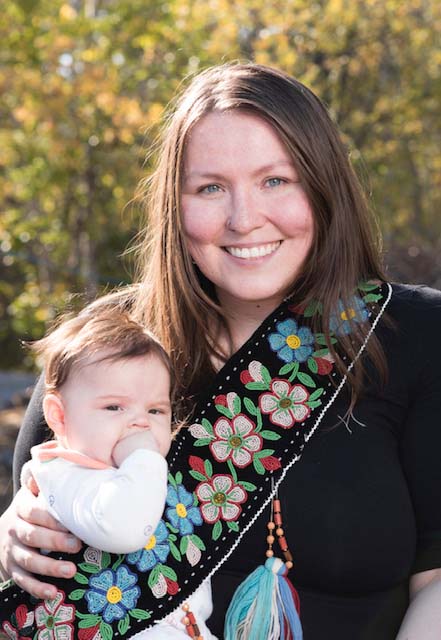Facing down distress, no one need be alone.
That's the message behind SafeTALK, a three-hour workshop tomorrow, Wednesday, open to anyone aged 15 years old or older.
It aims to assist community members to recognize “invitations” — the behaviours or the appearances of individuals who may be having suicidal thoughts. They can then reach resources, whether that be counseling, crisis lines or online supports.
“Everyone’s different,” SafeTALK instructor Alyssa Carpenter said. “That’s one of the biggest things people don’t realize.”

Photo Courtesy of Alyssa Carpenter
The workshop's only instructor in the territory, she tries to transition what would be typically described as warning signs into more positive language around assisting a distressed person. Those underlying feelings can often be more common than expected: While one in 20 can have thoughts of suicide, “but do people act on that?” she said.
For her, this can be indicative of the culture, and the stigma around suicide.
The most recent data on the subject from the Government of Northwest Territories Bureau of Statistics is from 2017. That year, six people took their lives in the Northwest Territories, compared to 12 the year before.
At least six people have taken their own lives every year since 2007.
While it’s not as high as in Nunavut, she said, “we’re still incredibly high. And it’s a lot of our younger population that’s doing this.”
The ongoing causes behind these high rates can vary, but include residential schools, the Sixties Scoop, inter-generational trauma, the cost of living and access to safe homes, she said. These can often be interconnected.
In response, communities have also been active: a suicide awareness march returned to Inuvik last month, and in July, Fort McPherson residents contributed their names to a hotline offering support to neighbours in distress.
Personally, a big reason Carpenter became certified is her own past with depression and experience in the North. “It’s the least of what I can offer, especially being from the region,” she said.
She said the SafeTALK program is western-designed, and not created specifically for the North. However, there is still good to take from it. “To have this conversation and say this is the reality that we’re in. People are taking their lives, and at an extremely fast rate.” She said. “(It’s about) understanding how do we intervene, how do we talk about this?
“Because it needs to be talked about. It needs to be acknowledged. It can’t be considered a taboo anymore.”
The workshop provides skills and tips on what to look and listen for, and what action can be taken in those situations. If someone is interested in this intervention aspect, the workshop especially caters to the skillset that’s required.
She said she tries to bring a Northern context to the discussion. While the lessons doesn’t fit everything, it allows for a frank, but gentle conversation about suicide.
“It’s also reminding individuals that are interested in wanting to support and do something, that we need to listen to people that can talk about what is going on and not be judged,” she said, explaining the stigma aspect here is critical.
When working with young people specifically, she said it was important to avoid jumping to conclusions. Youth might not understand their feelings, or know how to communicate them. They might act out, or disengage from school and extracurricular activities. Those feelings can manifest in a range of ways. They can also be unsure of what the response will be.
For her, youth she worked with would open-up in unexpected places, including public areas. However, “there’s always some form of invitation before someone has taken their life,” she said. "Everyone has their own way of asking for help.
“It doesn’t look the same for everybody, otherwise it wouldn’t be the issue it is today,” she said.